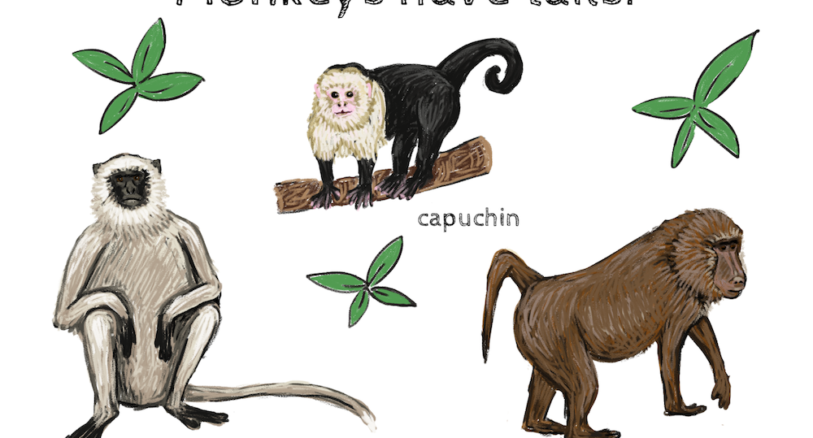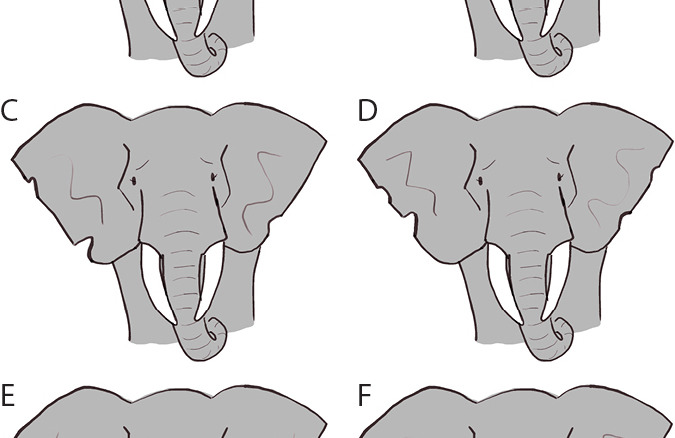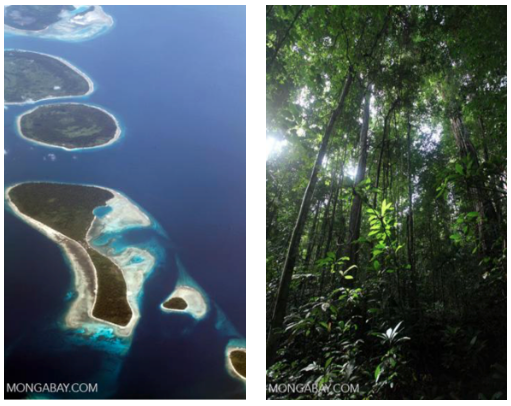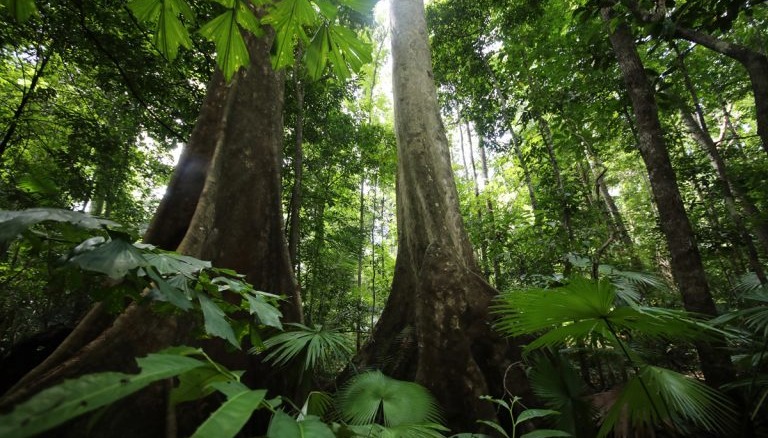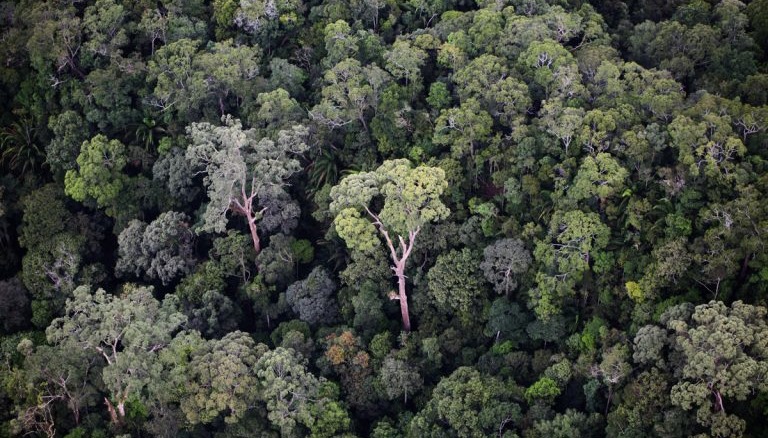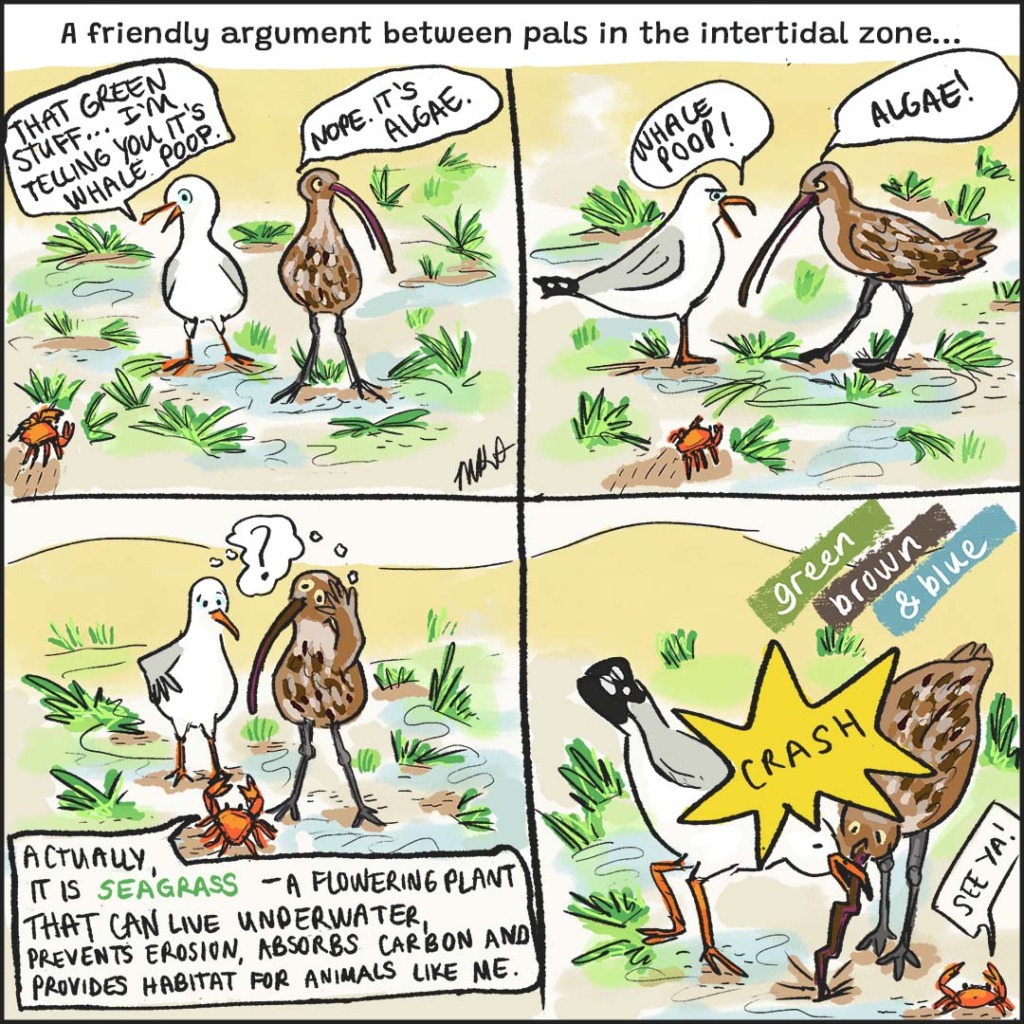
In this cartoon a gull and a curlew are hanging out in the intertidal zone in search of tasty things to eat. The intertidal zone is the part of the shore that is exposed during low tide. The shorebirds are having a disagreement about the green material that surrounds them. Fortunately, a clever crab has the answer: that green stuff is not whale poop. Nor is it algae. It is seagrass.
Let’s find out what seagrass is and why it is important!
What is seagrass?
Seagrasses are a group of aquatic plants that live in salty or brackish water in coastal areas. (Brackish water means a mix of seawater and freshwater. Brackish water is less salty than seawater.) Seagrasses can live partially or entirely submerged by water.
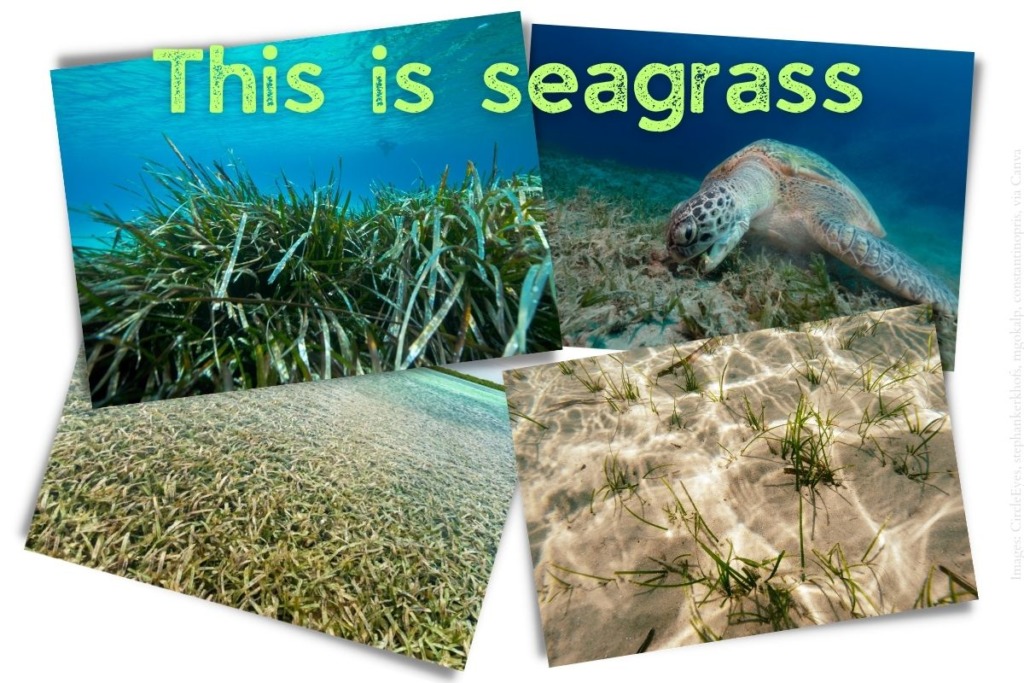
Is seagrass a type of algae?
There are many types of algae in the ocean. Some are microscopic, like microalgae. Some are big. Kelp is an example of a macroalgae. Here are more examples of macroalgae:
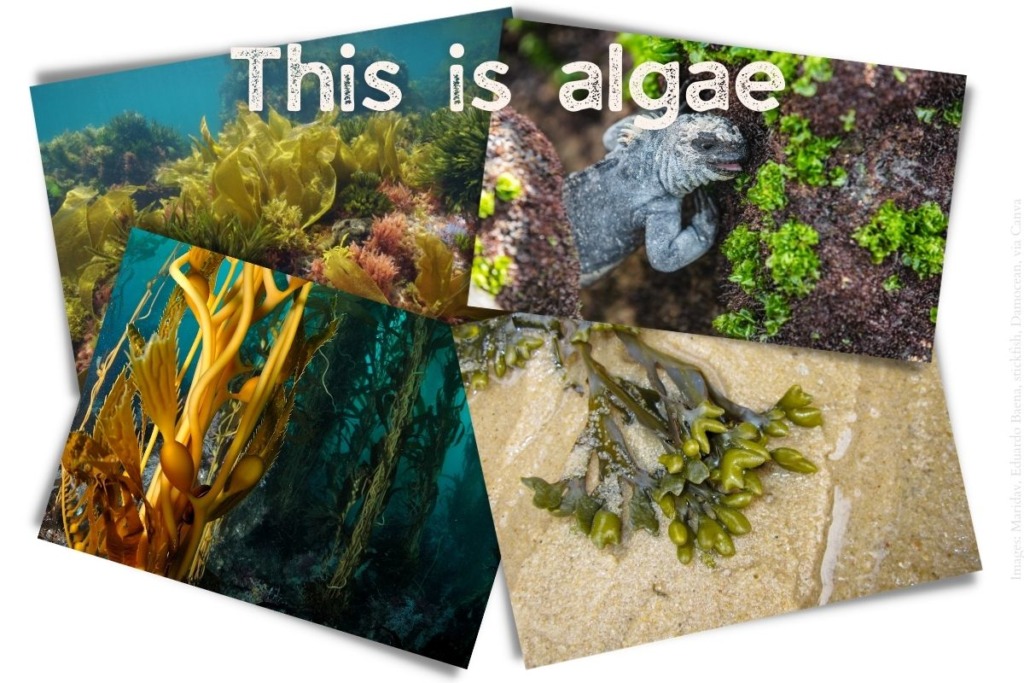
Seagrass is not a type of algae.
Seagrass is a true flowering plant. Like grasses that grow on land, seagrasses have roots, stems, leaves and flowers. Seagrasses can absorb the nutrients they need through both their leaves and their roots!
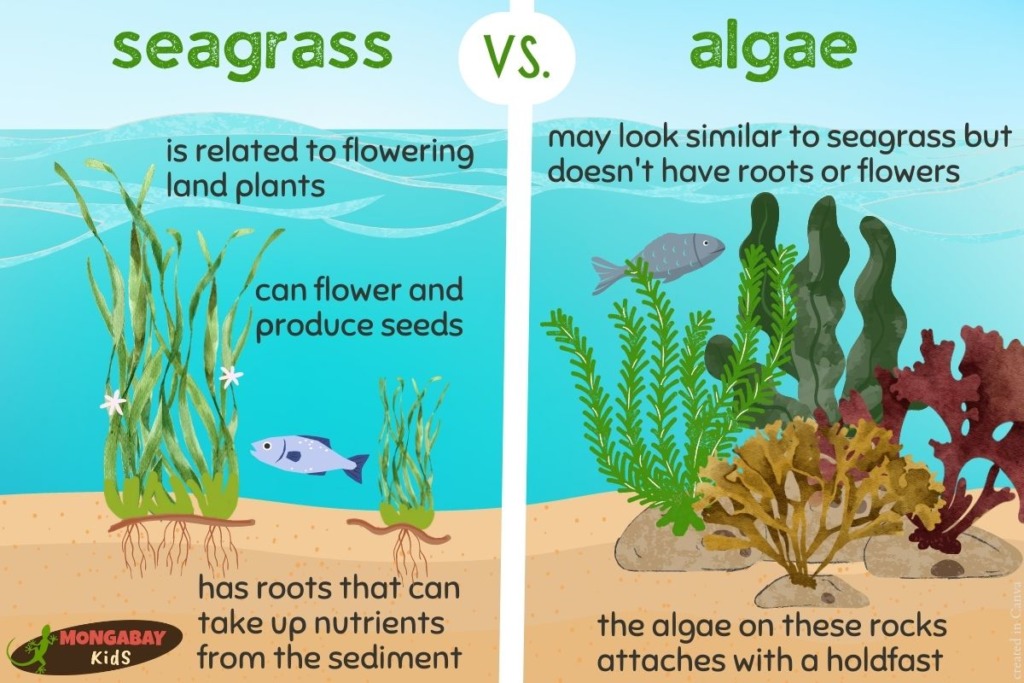
Where do seagrasses grow?
Seagrasses grow in shallow coastal areas and estuaries around the world. Seagrasses can form large underwater meadows. In fact, the world’s largest plant may be a seagrass meadow.
Here is an aerial view of a seagrass meadow:
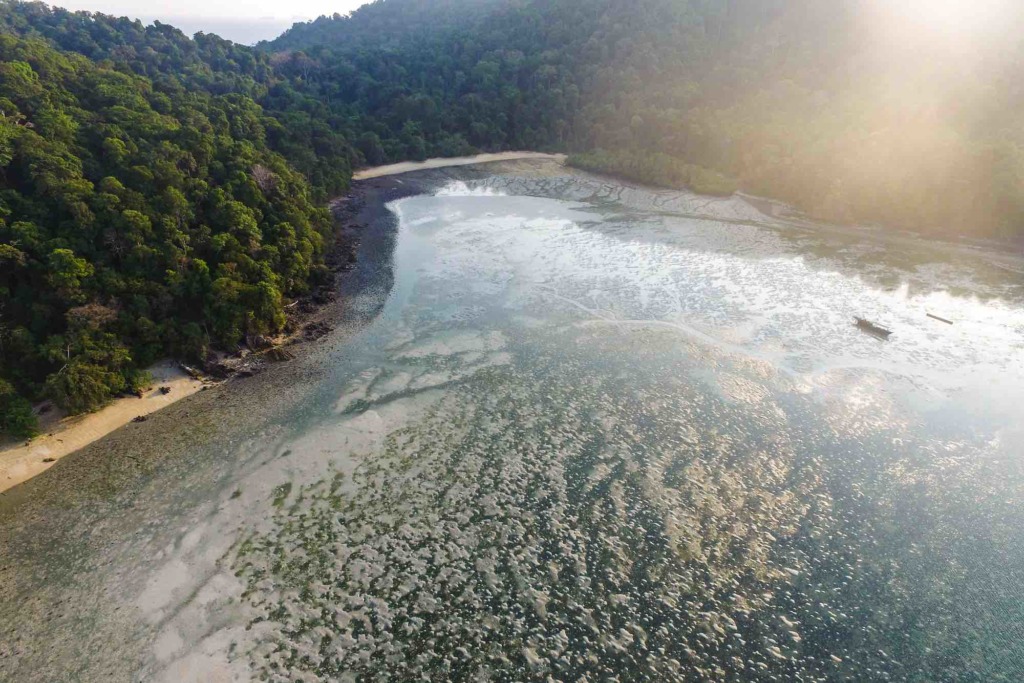
Here is an underwater view of a seagrass meadow:
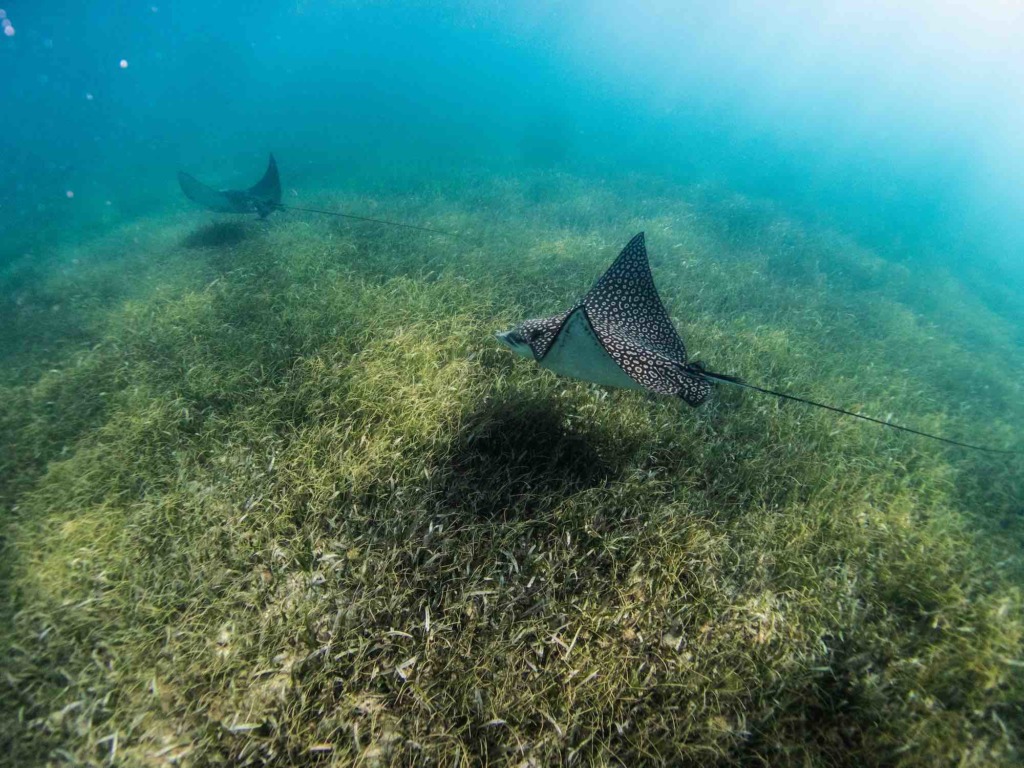
Watch this beautiful video of life in a seagrass meadow:
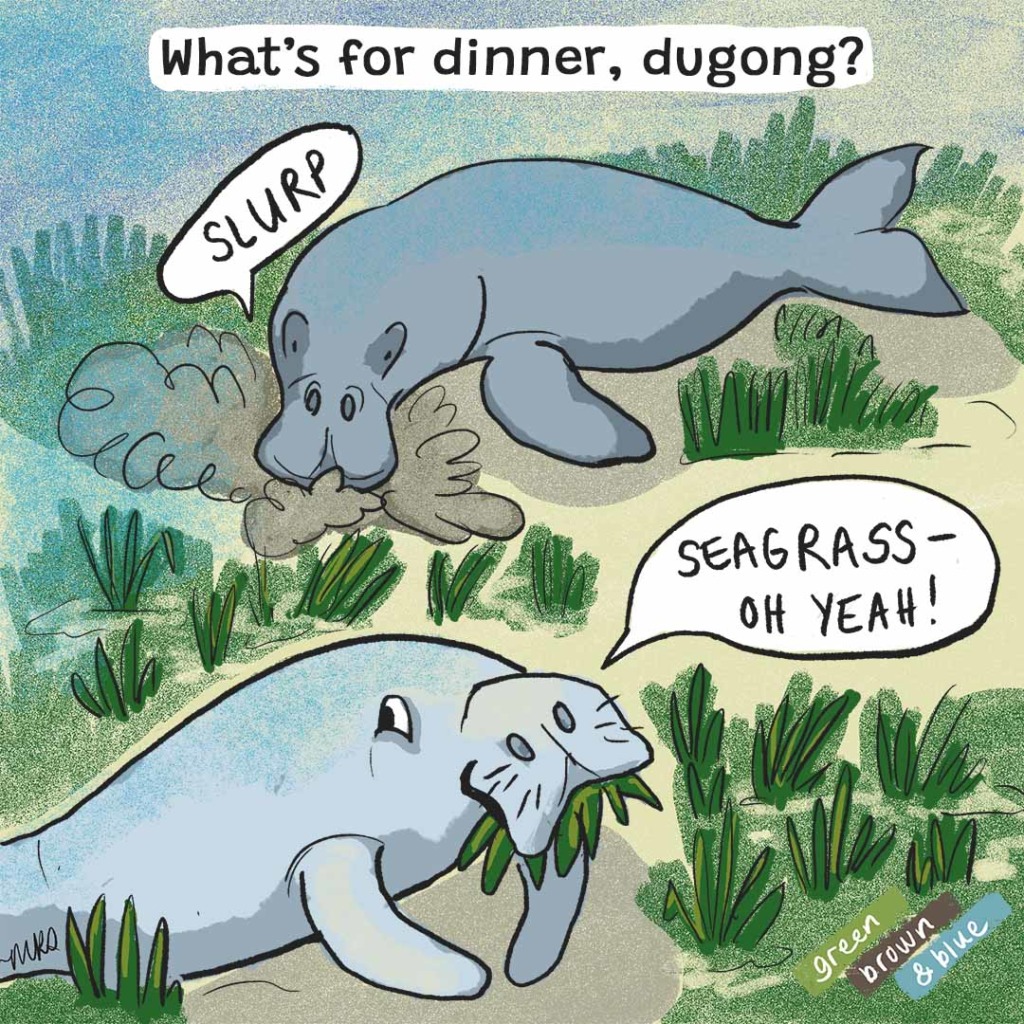
Why is seagrass important?
Here are some reasons why seagrass meadows are important:
- seagrasses prevent erosion – in other words, they help keep coastal sediment like sand from washing away
- seagrasses absorb carbon – they are really important in our fight against climate change
- seagrasses are important habitat for many species of animals and plants
- seagrasses are a critical source of food for dugongs and turtles
- when the leaves of seagrass plants die and wash ashore, they become food for decomposers, organisms that eat dead plant matter
- healthy seagrass meadows support our fishing and tourism industries
See if you can find even more reasons why seagrass is important in this infographic from the Wildlife Conservation Society:
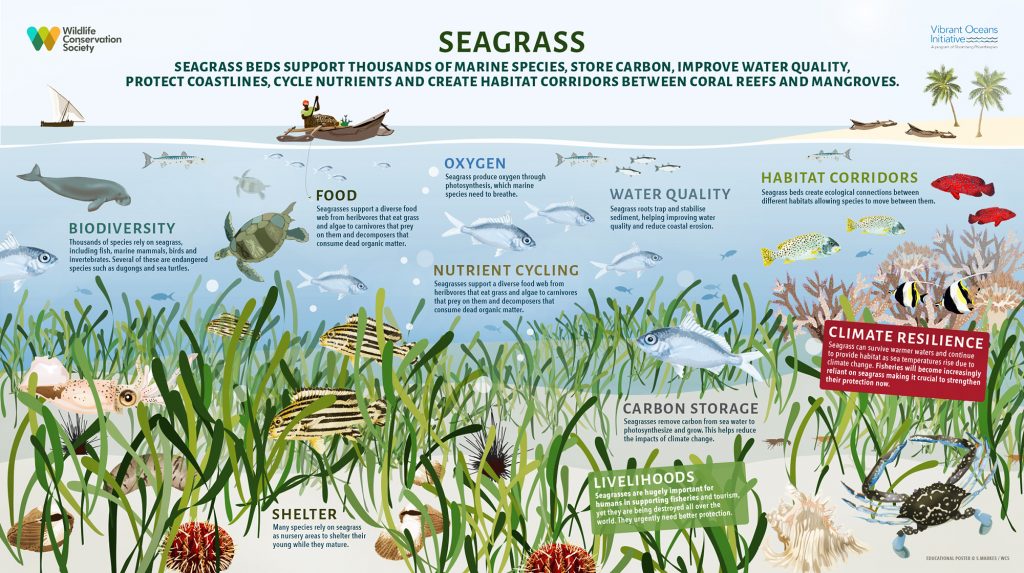
Wow, seagrasses are really fantastic!
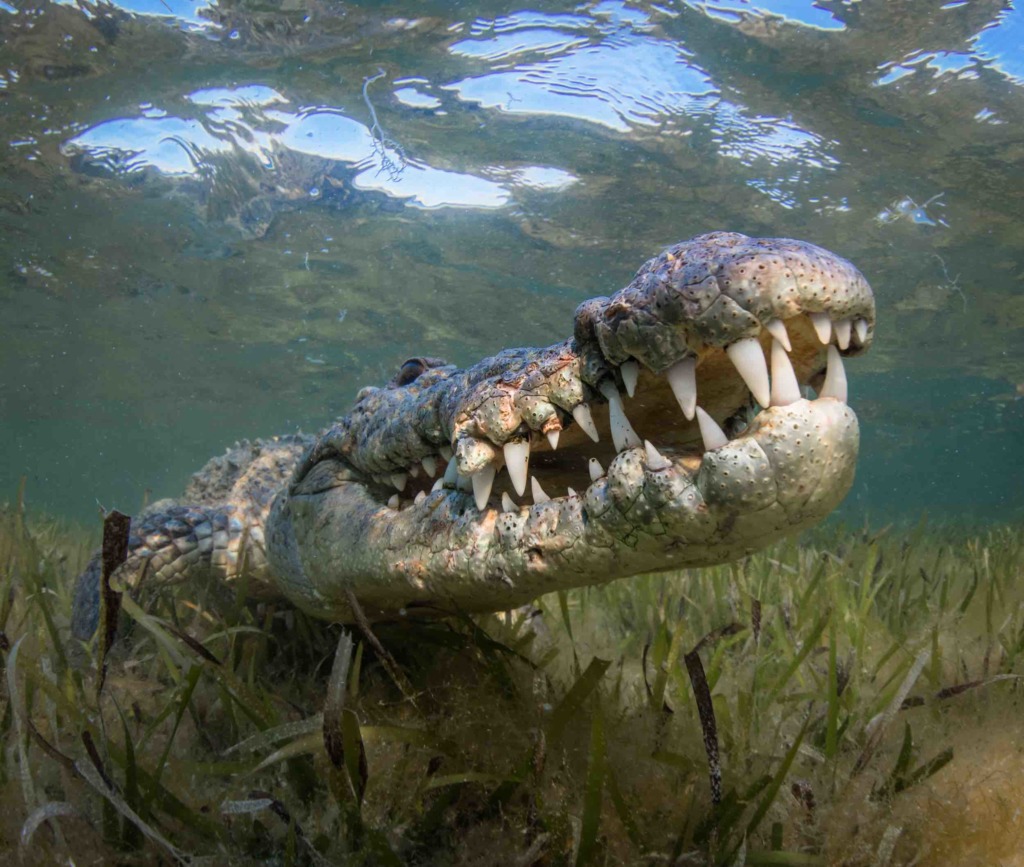
You may also like this
Dugongs and turtles help seagrasses grow, and this is important
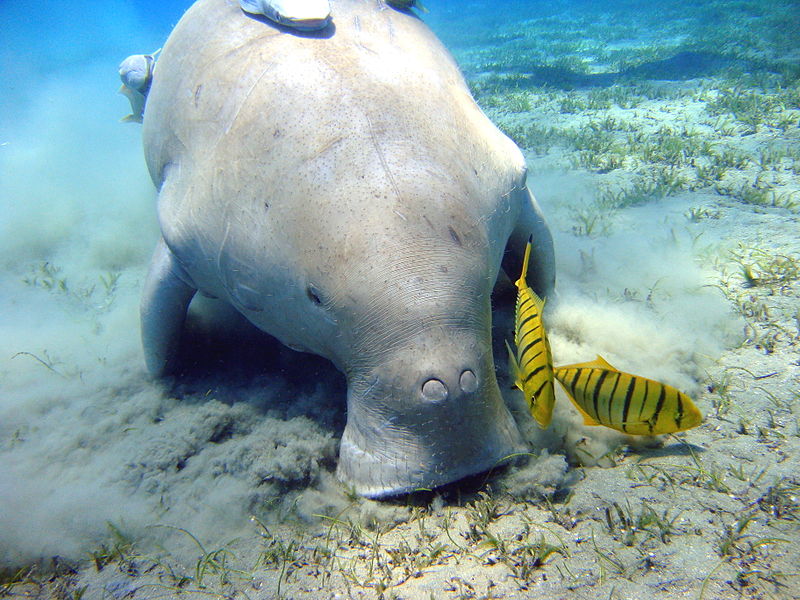
A seagrass meadow may be the world’s largest plant
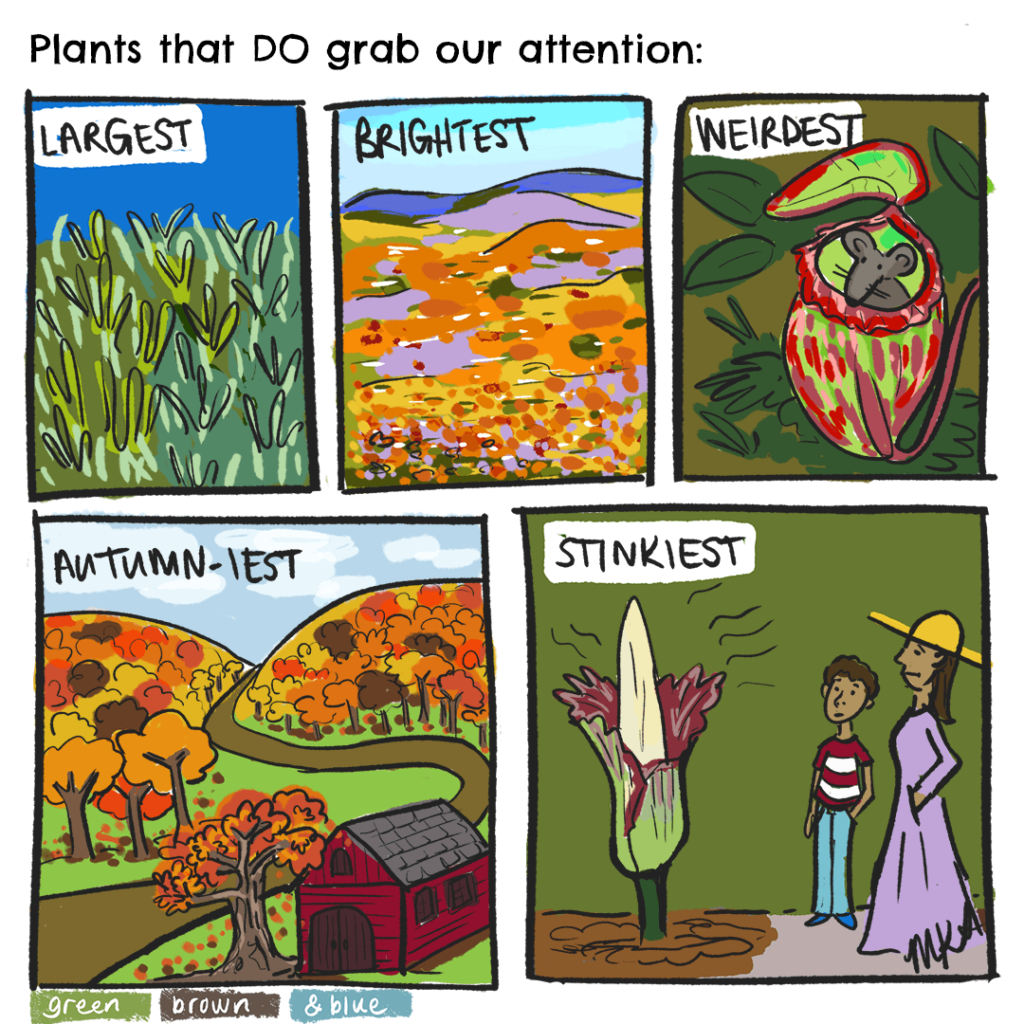
Resources for parents/educators
Here are some more resources to help you learn more about seagrasses, grass and algae:
- Smithsonian Institution: Seagrass and seagrass beds
- Frontiers for Young Minds: Secret Gardens Under the Sea: What are Seagrass Meadows and Why are They Important?
- Wildlife Conservation Society: Seagrass importance
- UN World Seagrass Day
- Duke Gardens: Meet a plant: grass
- NOAA: Seaweeds of the Olympic Coast National Marine Sanctuary
By Megan Strauss, cartoons by Megan Strauss, First posted Feb 21, 2023
*Mongabay Kids is not responsible for content published on external sites.

